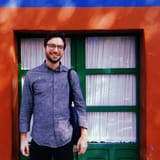Sankofa Park and African Burial Ground Square in East New York To Get A Fresh Look

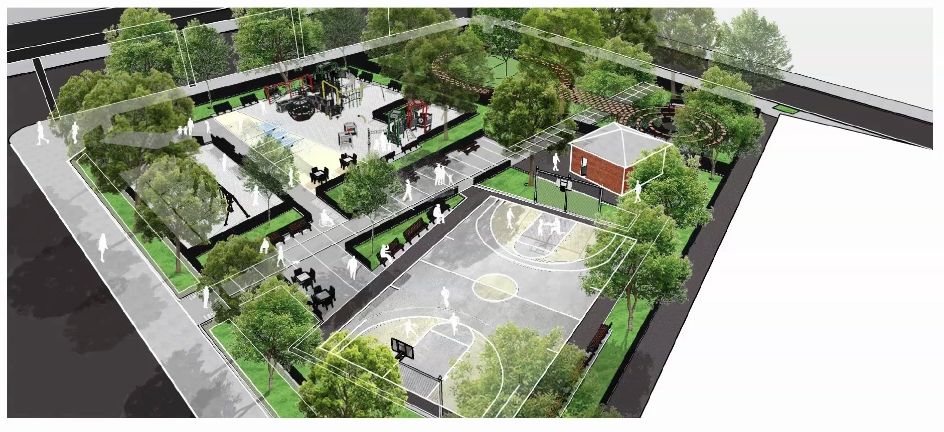
A redesigned East New York park will get new green space, playground equipment and a memorial for the enslaved Africans buried at the site hundreds of years ago.
The city’s Parks Department unveiled the details for its reconstruction of Sankofa Park, located at Livonia Avenue between Barbey Street and Schenck Avenue, at a Community Board 5 meeting on Tuesday night.
The new proposal was the result of a multiyear community consultation process. In 2010, historians reviewing a map from 1878 discovered that the site had previously been a burial ground for Africans brought to the United States as part of the transatlantic slave trade.
The discovery was not the first of its kind; that same year, an African Burial Ground Visitor’s Center opened in lower Manhattan two decades after the remains of over 400 African slaves were uncovered beneath a parking lot near City Hall.
Archeologists employed by the city then found bone fragments and other belongings buried under the eastern part of the park, where there are currently basketball and handball courts.
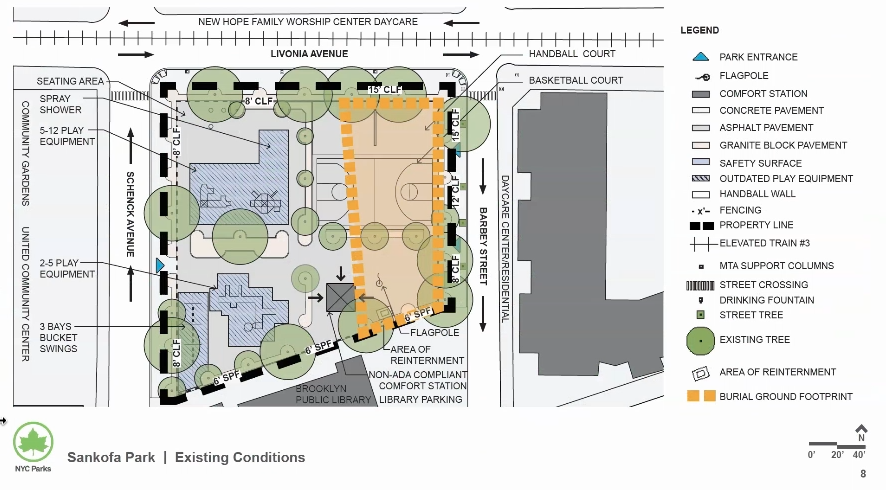
In 2013, elected officials formally designated the area as “African Burial Ground Square.” In 2019, the human remains were re-interred at the site, and the playground’s name was changed from Schenck Park—named after a Dutch slaveholding family—to Sankofa Park, a Ghanaian Twi word that means “looking back to go forward.”
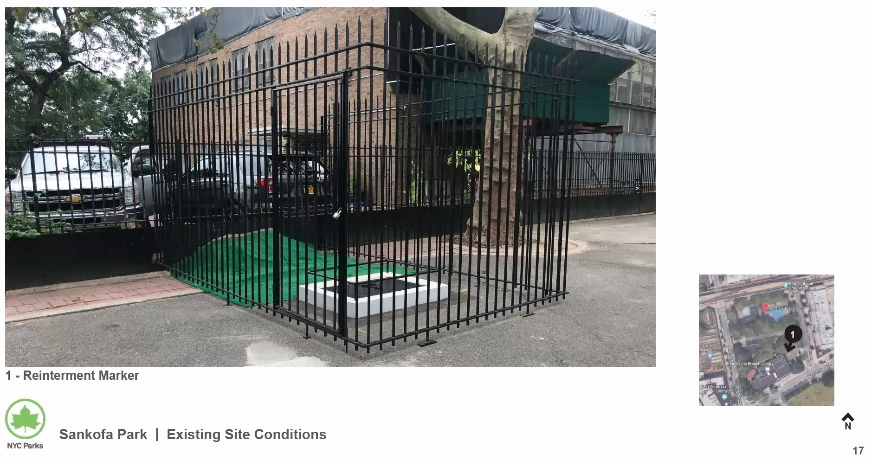
The city’s new redesign looks to honor that history.
The area above the burial site, now mostly asphalt, will be transformed into two adjacent green spaces: an oval lawn with historic design elements meant for “passive reflection,” and a West African-inspired “educational area” featuring a circular platform designed for orators and storytellers alongside a permanent memorial marker to those buried underneath.
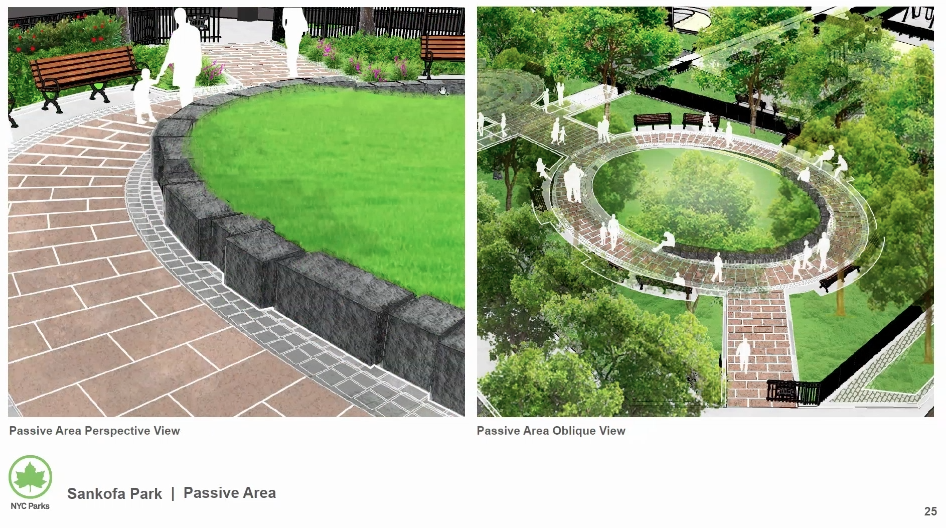
The design makes heavy use of black granite, including for the “Griot Stone” at the center of the educational area; its name comes from the concept of the griot, a West African poet and oral historian.
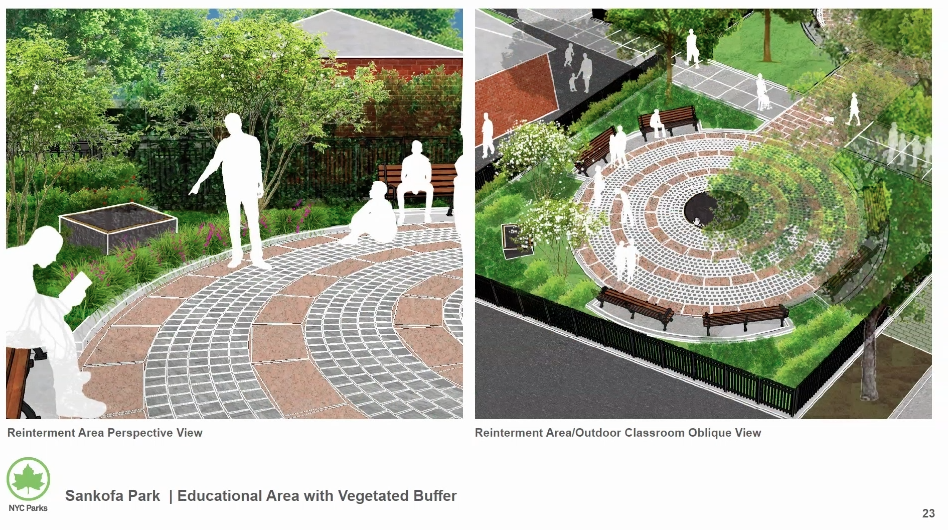
“It was important for us to not only honor the history of the site and respect those who were buried there, but we also wanted to tell a story within the site,” Jeffrey Martin, a Parks Department staffer, said at the community board meeting. “We worked with community board leaders, archeologists, cultural historians and experts to really understand how the history of the people of the site could create defining site elements.”
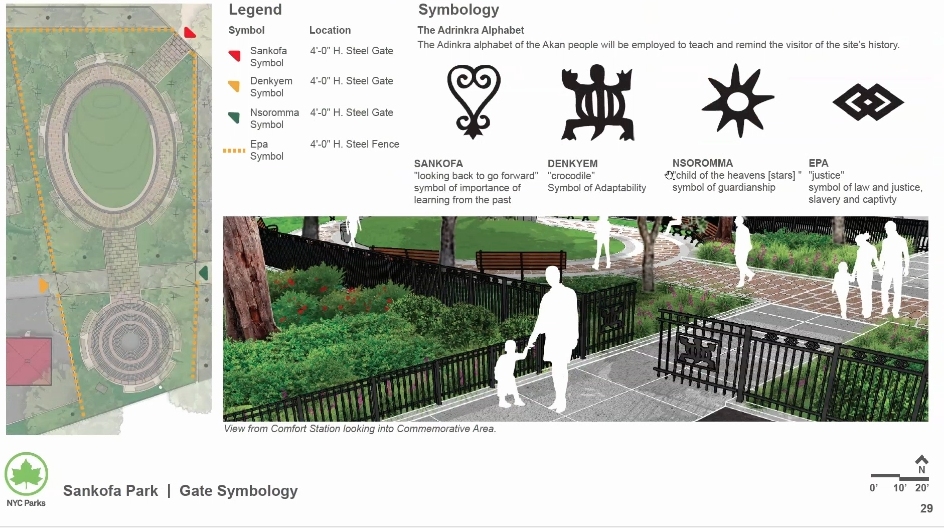
The department also plans to install signage detailing the history of the site and the surrounding area’s existing Black community.
The remaining two-thirds of the .85-acre park will serve as an active recreation area, and include a basketball court, a playground, game tables and a comfort station. Here, too, cultural design elements will peek through: the playground equipment will feature touches of red, yellow and green in a reference to the pan-African flag.

The $4 million redesign is being paid for with about $2.1 million in discretionary funding from Council Member Inez Barron, $1 million on grant money from her husband, Assembly Member Charles Barron, and $937,000 from Brooklyn Borough President Eric Adams.
Martin Maher, the Brooklyn Parks Commissioner, said the Department hopes to begin construction in Fall 2022, with the project expected to be completed sometime the following year.
When the project is finished, it will become the latest step in a long-delayed process of recognizing the presence and impact of African slaves on the city’s history.
“Every time they see the park named Sankofa and the street signs named African Burial Ground,” Barron told Amsterdam News in 2019, when the park was renamed, “we can tell them about our ancestors who built the foundation of East New York and were never paid.”

